AgTech: An overview of the agriculture industry in IT
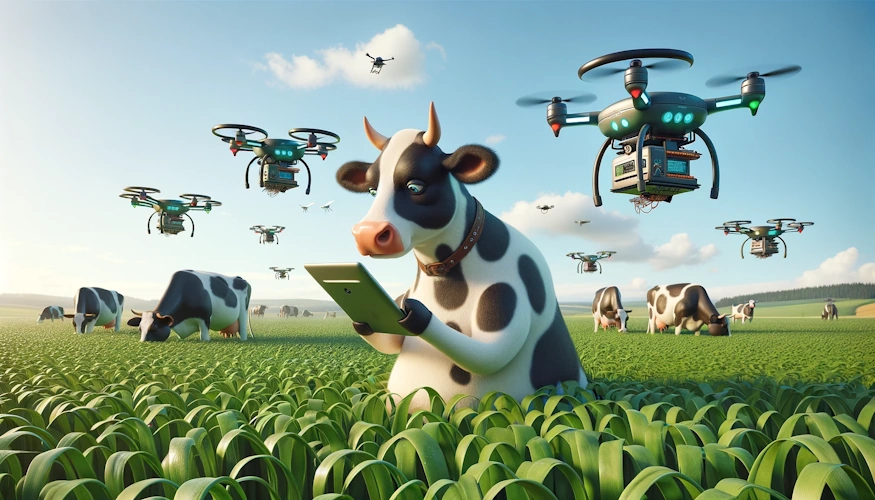
Intro to AgTech
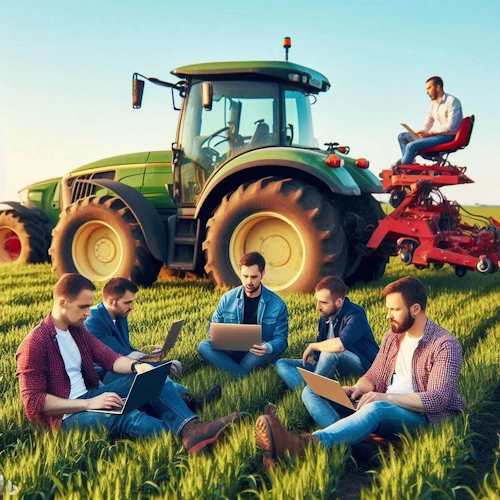
What is AgTech?
AgTech - Agricultural Technology. AgTech is also sometimes referred to as Agritech or AgriTech. AgTech represents the application of technology in the field of agriculture. Agriculture regularly uses advanced technologies such as robots, temperature and humidity sensors, aerial photography, and GPS technology. These advanced devices and precise agricultural and robotic systems make businesses more profitable, efficient, safer, and environmentally friendly.
History of AgTech

- 1960s: Mechanization of agriculture began to replace manual labor.
- 1970s: Development of tractors, satellite imagery of plots and data analysis
- 1980s: Remote sensing of the earth's surface
- 1990s: GPS technology using satellite navigation.
- 2000s: Precision farming is an agricultural management concept based on observing, measuring, and responding to crop variability between and within fields. IoT sensors for monitoring are also being developed in the same way
- 2010s: Smart farming, Development of AI & ML for crop analysis and forecasting.
- 2020s: Development of drones for plot monitoring, plant disease detection, and even for fertilizer spraying.
Glossary of Terms
- AgTech (Agricultural Technology): Technologies aimed at increasing the efficiency and sustainability of agricultural activities.
- Precision Agriculture: An approach to farm management that uses IT and various types of sensors to optimize agricultural practices and increase yield.
- Drones in Agriculture: Unmanned aerial vehicles used for crop monitoring, spraying, and other tasks.
- Hydroponics: A method of growing plants without soil, in a water solution containing the necessary nutrients.
- Aeroponics: A technology for growing plants in an air or mist environment without the use of soil.
- Smart Farms: Farms that use advanced technologies and algorithms to automate and optimize processes.
- Biotechnology: The use of living organisms or their systems to create or modify products or processes for specific uses.
- Artificial Intelligence in Agriculture: The application of AI for data analysis, crop forecasting, disease detection, and automation of routine tasks.
- Satellite Monitoring: The use of satellite images to monitor crop conditions, analyze land, and manage resources.
- Farm Data Management: Collecting, storing, and analysis of farm activity data to improve efficiency and sustainability.
- GIS (Geographic Information Systems): Technologies for collecting, managing, and analyzing geographic data. In AgTech, GIS is used for field mapping, soil analysis, and resource management.
Key technologies and tools in AgTech
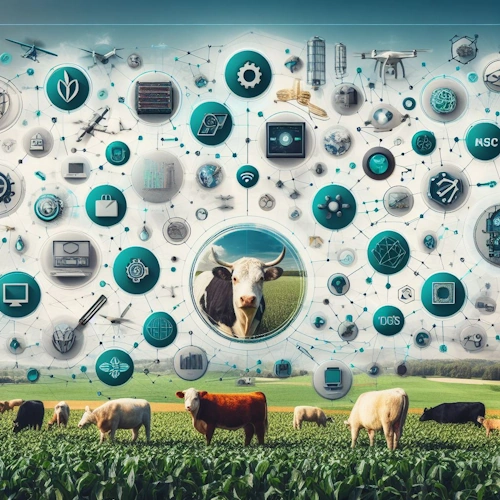
Internet of Things (IoT)
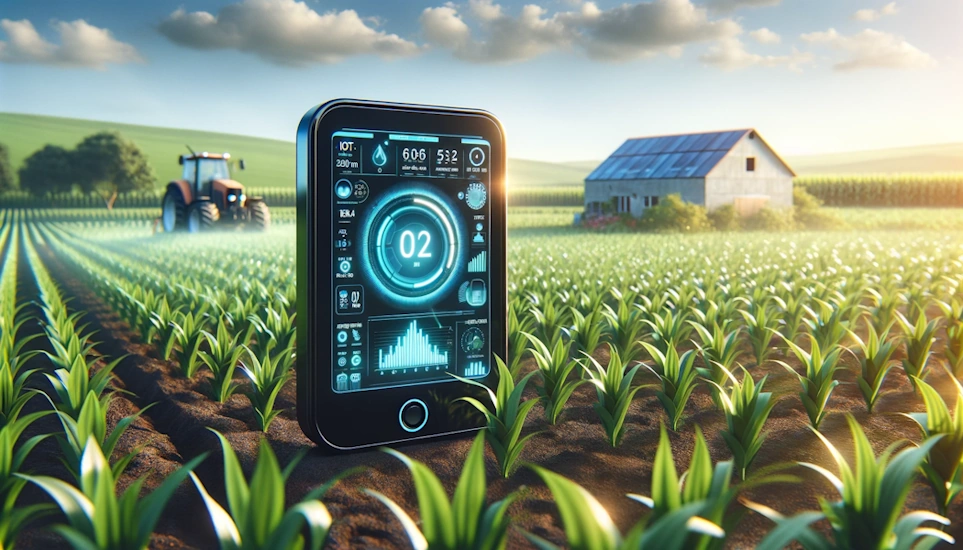
Smart agriculture involves the use of IoT solutions in the agricultural sector. Sensors collect environmental and machine data to help farmers make informed decisions and improve their operations.
Benefits of Smart Farming:
- Large Volume of Data: Sensors collect data on weather, soil quality, plant conditions, and livestock health.
- Process Control: Predictability and planning of production.
- Cost Management: Reduction of waste through production control.
- Process Automation: Use of smart devices to automate irrigation, fertilization, and pest control.
- Improved Quality and Quantity of Products: Automation allows for maintaining high-quality standards and increasing yield.
- Reduction of Environmental Footprint: Decreasing the use of pesticides and fertilizers.
Here are a few use cases where IoT solutions are applied:
Monitoring of climatic conditions
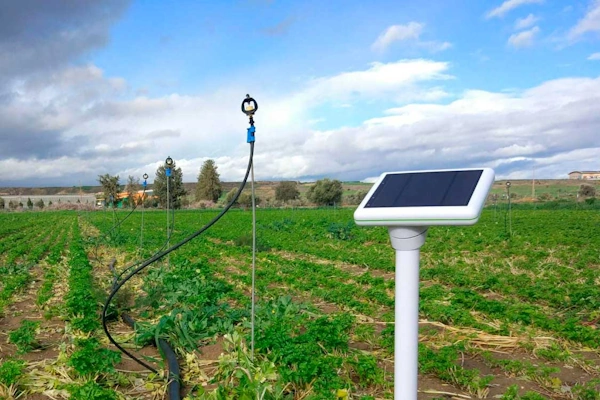
Weather stations used, such as allMETEO, Smart Elements, and Pycno.
Greenhouse automation
Systems such as Farmapp and Growlink, allow to control conditions in greenhouses
Crop management
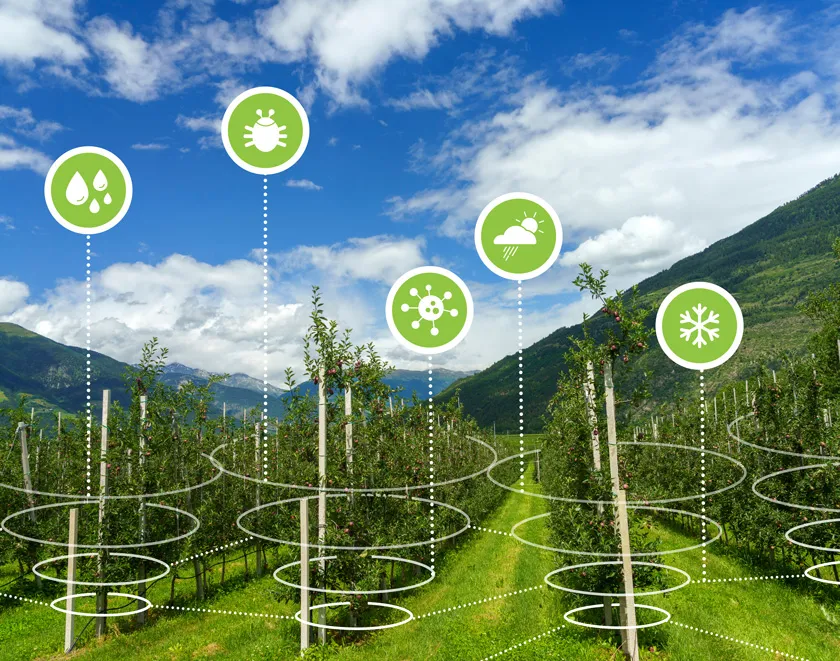
Devices such as Arable and Semios, help to check the condition of the crop.
Livestock monitoring and management

SCR by Allflex and Cowlar use sensors to track animal health.
Precision farming
Precision farming is based on efficiency and making accurate decisions based on data. It is also one of the most common and practical applications of the IoT in agriculture.
CropX and Mothive are using IoT to optimize irrigation and fertilization.
Forecasting in smart farming
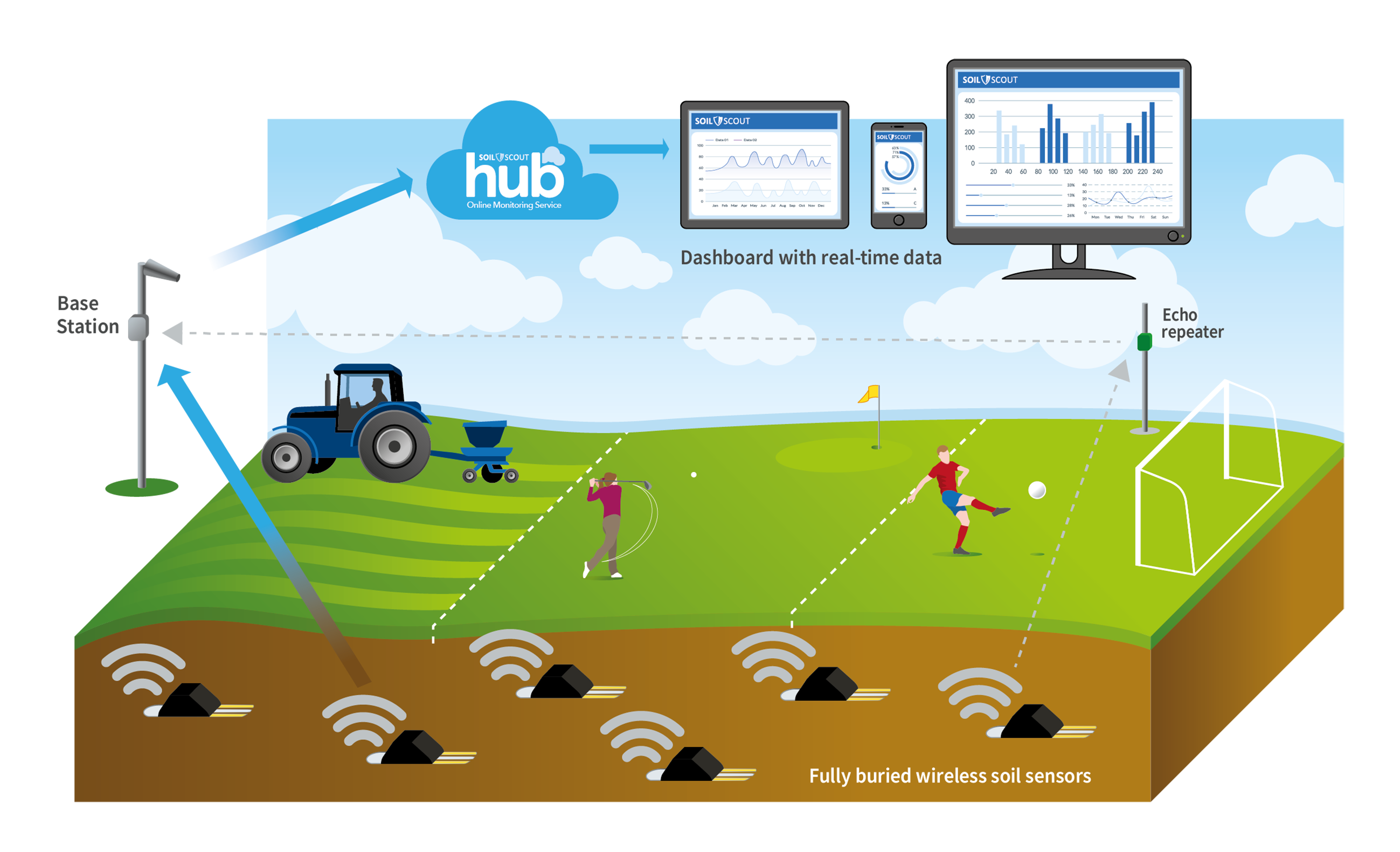
Data analytics tools help make agriculture, which is inherently highly dependent on weather patterns, more manageable and predictable.
For example, the Crop Performance platform helps farmers access information about the volume and quality of crops in advance, as well as their vulnerability to adverse weather conditions such as floods and droughts. This also allows farmers to optimize water and nutrient supply for each crop and even select yield characteristics to improve quality.
Solutions like SoilScout, used in agriculture, allow farmers to save up to 50% of irrigation water, reduce fertilizer losses caused by overwatering, and provide valuable information regardless of the season and weather conditions.
Farm management systems
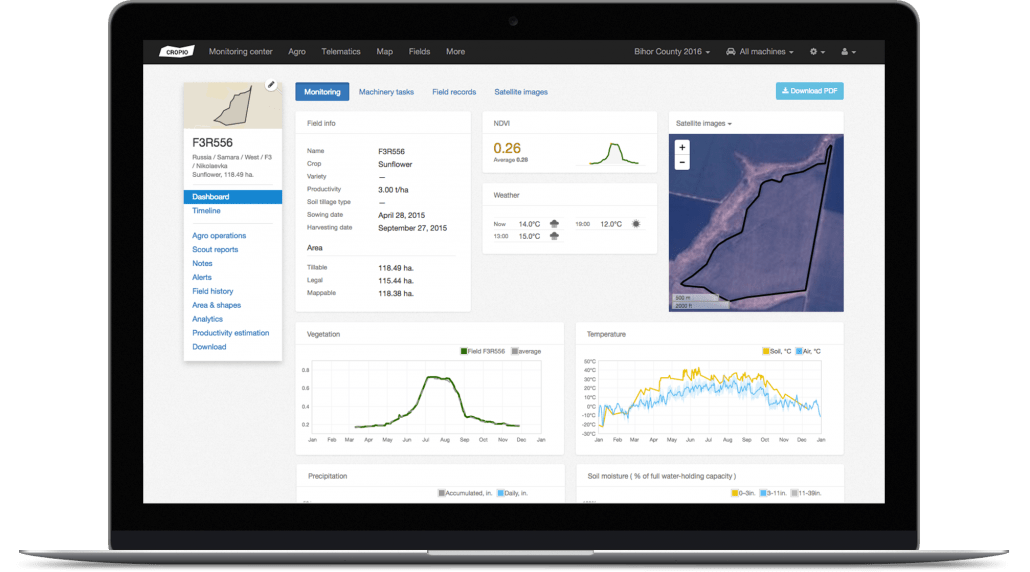
A more sophisticated approach to IoT products in agriculture can be represented by so-called farm performance management systems. These typically include a number of agricultural IoT devices and sensors installed on premises, as well as a dashboard with analytics capabilities and built-in accounting/reporting functions.
Similar solutions are presented by FarmLogs and Cropio
Robots and autonomous vehicles
For example, modern agrobots include automated tractors that can work according to predetermined routes, send notifications, start work at scheduled hours, etc. Such tractors are unmanned and reduce labor costs for farmers.
Artificial intelligence and machine learning
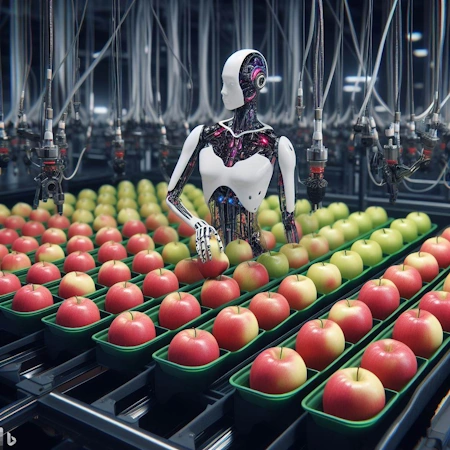
AI and ML help analyze large volumes of data to identify patterns and trends that may not be obvious to humans. They are also used to forecast yields, determine the optimal harvest time, and even recognize plant diseases.
Prediction and Data Analysis: AI is used to analyze data on weather, soil, and plants. For example, algorithms can predict the optimal time for sowing based on weather conditions and historical yield data. AI also helps diagnose plant diseases at early stages by analyzing images of leaves.
Automation and Robotics: AI-driven robots can automatically perform tasks such as weeding or harvesting. For instance, robots that harvest fruits use cameras and sensors to determine the ripeness and precise location of fruits on trees.
Crop Monitoring and Management: Drones and satellites capture images of fields, and AI analyzes these images to assess the condition of crops and soil. This helps farmers identify which areas of the field need additional irrigation or fertilization. This topic will be further explored in the next section.
Resource Management: AI helps optimize the use of water and fertilizers by analyzing soil moisture data and plant needs. For example, drip irrigation systems can automatically adjust the amount of water based on sensor data in the soil.
Data-Driven Decision Making: Farmers use AI to analyze large volumes of data, aiding them in making informed decisions. For example, analyzing market trends and weather conditions can help determine which crops will be most profitable to plant in the next season.
Drones and satellite technology
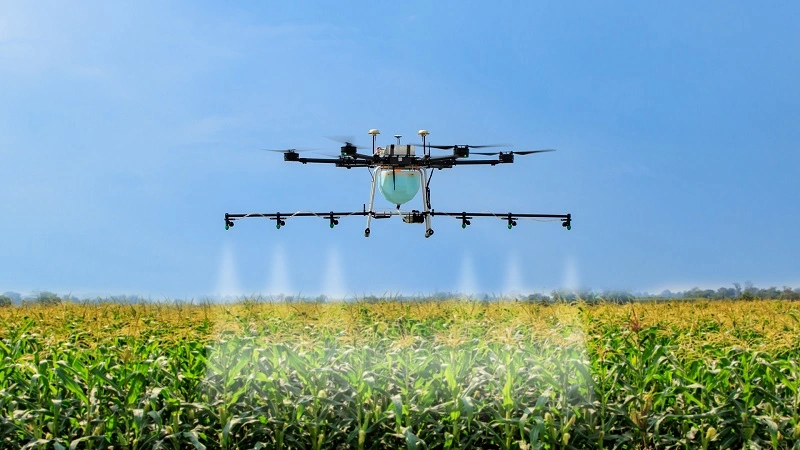
According to Ocean Report, the agricultural drone market was valued at $13.59 billion in 2022, and it will climb to an astronomical $64.5 billion by 2030! They help farmers make smart farming decisions.
Now let's understand how drones help in AgTech tasks:
Plant monitoring
Drones create color maps of fields using NDVI to help track plant growth. It's a cool way to find problem areas quickly. 🌽
And while satellites can gather this information too, drones do it much more accurately and cheaply. They don't depend on weather and lighting, unlike satellites. 🛰️
By the way, some companies are building platforms that combine data from drones to give farmers even more insights about their fields.
Here's how it works told in a video, for example:
Soil monitoring
Drones are also used to monitor soil and field conditions. They allow farmers to find any irregularities, map drainage and dry areas to better plan and utilize irrigation. They also analyze soil salinity and the amount of elements in the soil, including nitrogen, potassium, and phosphorus. This allows for more accurate crop planning, yield forecasting and fertilizer distribution.
Planting plants
Modern drones are now being used in seed planting as well. Currently, automated drones for planting seeds are mainly used in the forestry industry. Their use allows planting trees in hard-to-reach areas, and a team of two operators and ten drones can plant up to 400,000 trees per day.
Plant spraying and pollination
This type of drone can reach the most remote places, including tea plantations on high slopes.
For example, Precision AI from Canada have created smart drones with high-resolution cameras that can detect and treat problem areas with incredible accuracy of up to 96%. 🎯
And DJI of China has developed a line of Agras drones, including the MG-1S Advanced, which is equipped with radar and dynamic systems. These drones can cultivate crops up to 40 hectares
Drones can also be used to pollinate plants. The American company Dropcopter offers such solutions. During the flowering season, Dropcopter can be programmed to fly between certain rows of crops, where it collects pollen. The drone then distributes it to the areas where it is needed. The drones have been successfully tested on several crops including almonds, apple, cherry and pear. In three years, their yields have increased by 25-50%.
Pest control
Researchers at Wageningen University in the Netherlands have developed an interesting technology. Their infrared PATS cameras allow mini-drones to distinguish moths from other insects. How do they do this? They analyze wingbeat frequency and size. 📷🦗
Once the pests are identified, the drones take off and eliminate the threat. It's a really smart and effective solution to pest control in the fields! 🌾
Yield increase
Thanks to new technologies, drones can have a direct impact on crop yields.
At night, drones use a laser to treat crops from a height of 10-20 meters using different wavelengths. At various stages of maturity, laser irradiation can increase yields by 10-35%.
Farm security
The use of drones allows you to observe remote corners of the farm and monitor all operations in the field. Security drones can be used to monitor more valuable crops. Drones can also help protect crops from wild animals and other dangers. And the monitoring process takes a few minutes instead of several hours.
For example, DJI offers the Mavic 3 Enterprise and Mavic 3 Thermal drones with thermal imaging, which can be used to monitor wildlife in fields and identify fire hotspots. The Mavic 3E has a 20MP wide-angle camera and the Mavic 3T has a 48MP wide-angle camera. The devices can be controlled from a distance of up to 15 km.
Drones with artificial intelligence
Company from the Netherlands, MultiRotorResearch, is developing drones that can find their way with the help of AI. These smart drones will be able to calculate optimal routes and take off based on just three GPS coordinates, including altitude. In the future, they will even be able to avoid obstacles in their path.
Robotics at AgTech
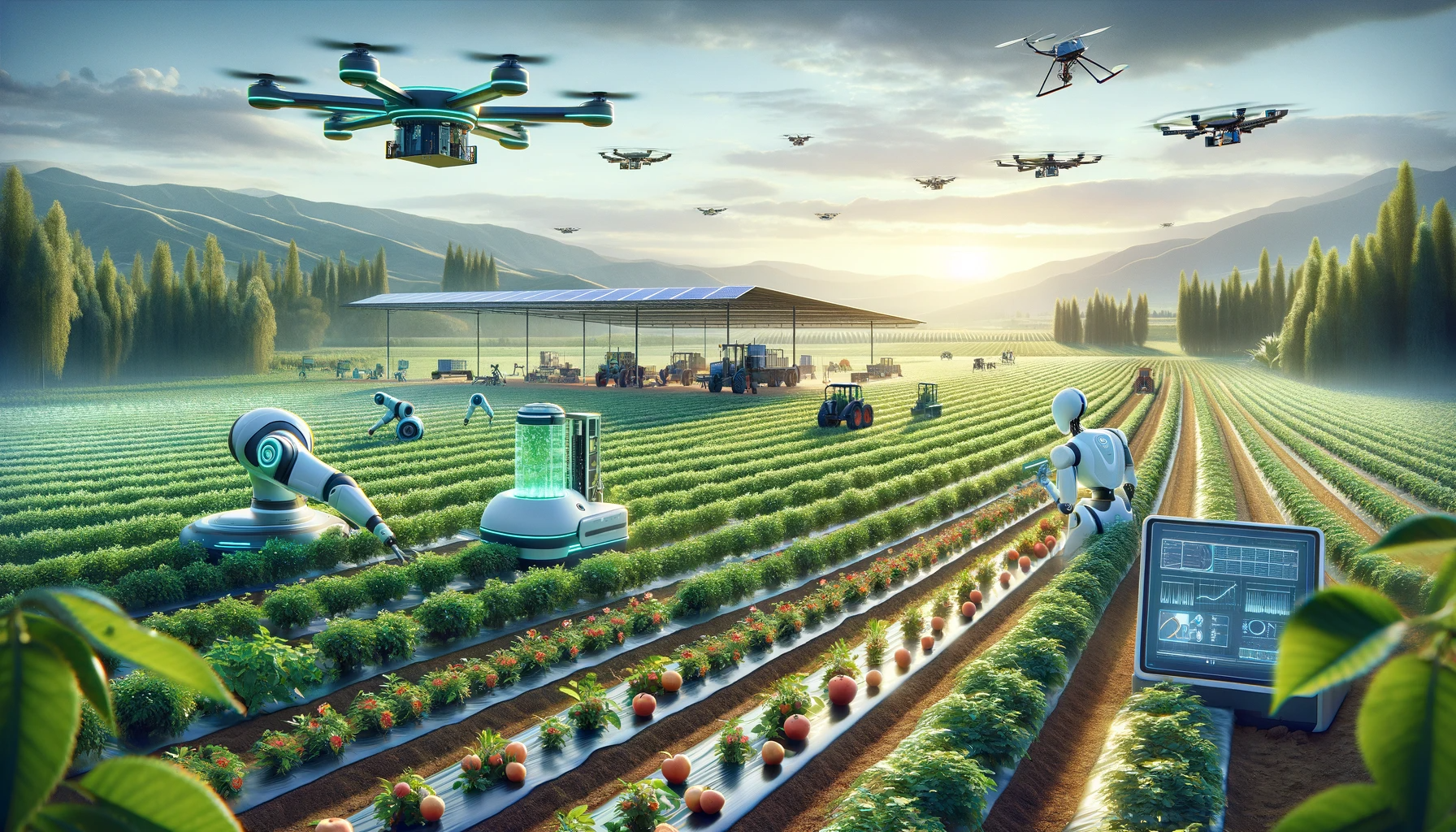
Robot-assisted automation reduces reliance on human labor and increases the efficiency of operations such as seeding and harvesting.
Here are examples of a few products:
Adigo Field Flux Robot
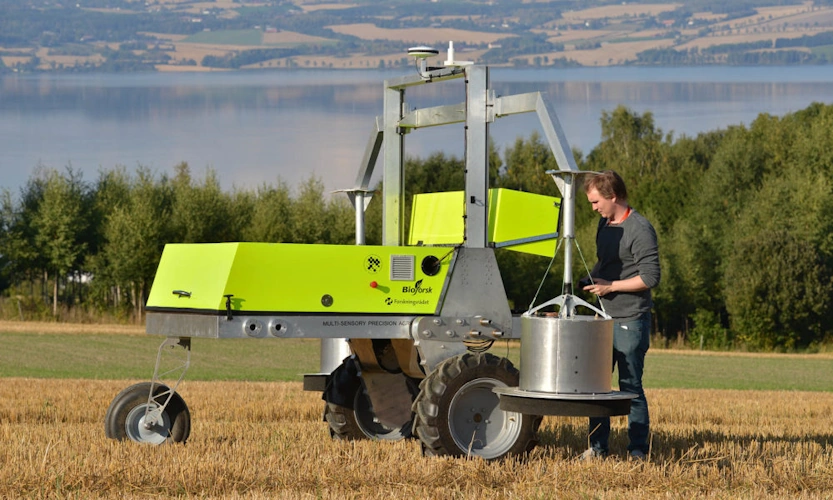
When nitrogen fertilizers are applied, some of the nitrogen is converted into the greenhouse gas nitrous oxide (N2O), which plants cannot use. The standard N2O test takes more than 24 hours, but startup Adigo has created a robot that does the test in an hour.
Ecorobotix

The device resembles a tennis table in appearance and is designed for weed control. The robot, equipped with high-resolution cameras and AI, recognizes weeds and treats them with herbicides. This method reduces the use of herbicides by three times. The device is controlled via innovative software and a GPS tracker and can operate autonomously for up to 12 hours.
Ladybird
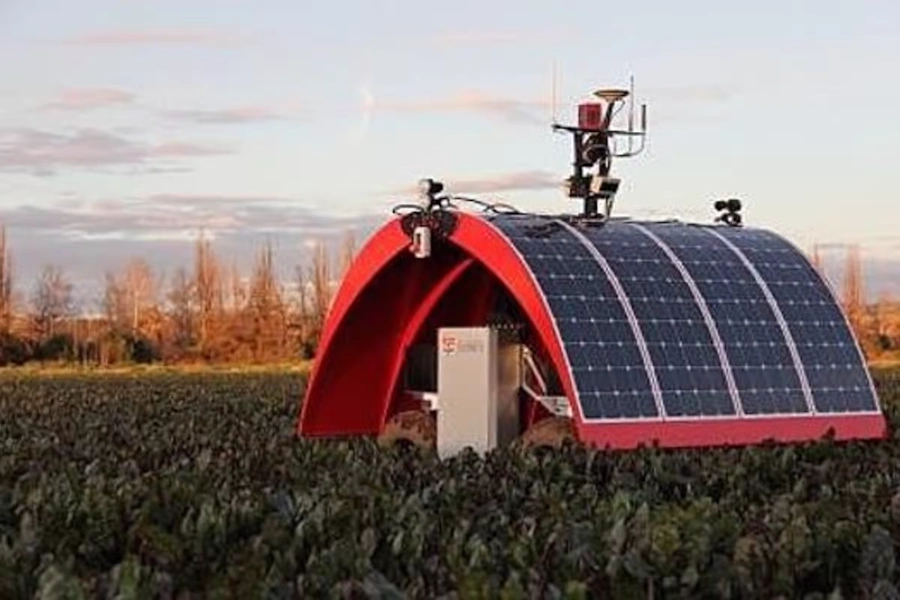
"Ladybug", a mapping robot designed for vegetable plots, performs real crop monitoring. It is equipped with sensors and cameras to monitor plants around the clock and detect problems. It runs on solar power, allowing it to stay in the field all daylight hours without recharging. Additionally, the robot has a manipulator to remove weeds. Developers from Salah Sukkari University plan to use it to harvest crops in the future.
Rosphere
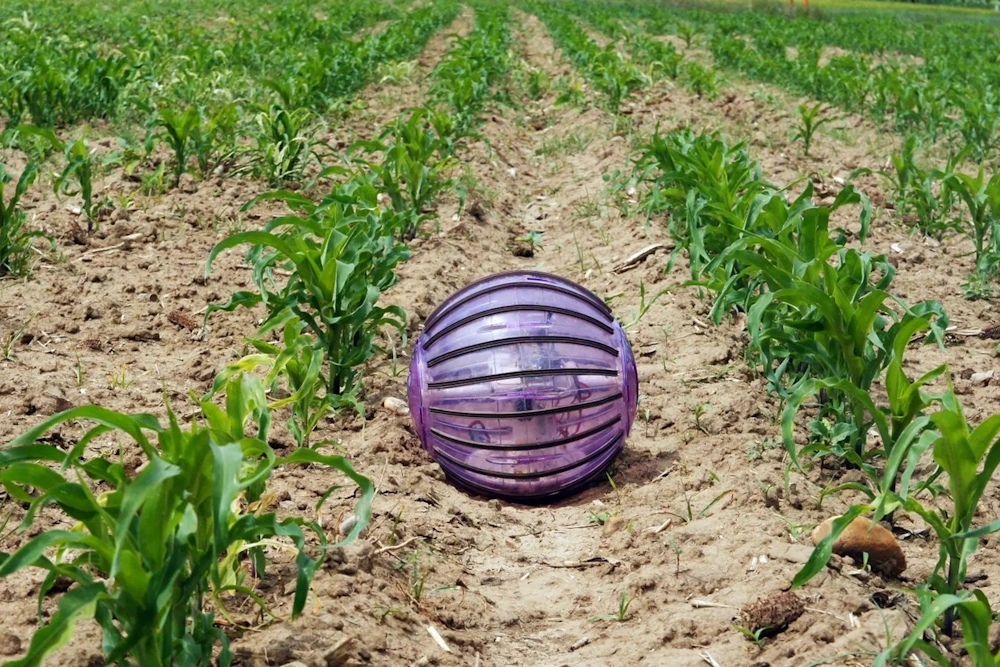
Scientists at the University of Madrid have developed a small, ball-shaped robot that detects diseased plants in a field. The robot's simple design allows it to move easily and make sharp turns. It is equipped with sensors, cameras and a GPS tracker, and analyzes soil composition and other key parameters.
Nursery Bot
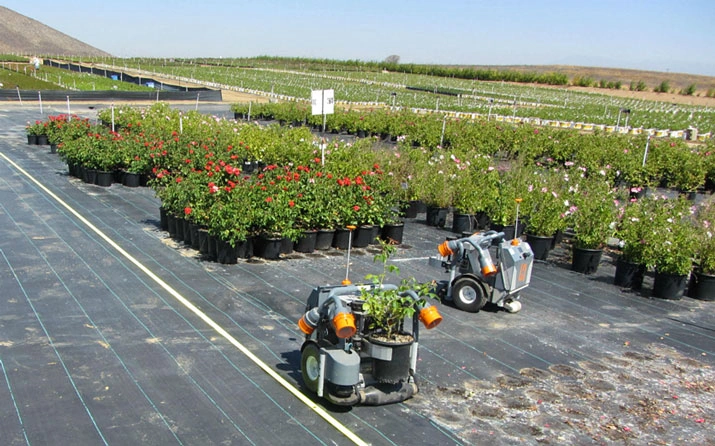
Nursery Bot is a robotic gardener capable of caring for potted plants. The robot learns by memorizing the location of plants and can transport pots using a mechanical arm. Plans are in the works to expand its functionality. Autonomous systems like the Nursery Bot make farmers' jobs easier and reduce labor costs, though it may not appeal to workers in agriculture.
Biotechnology
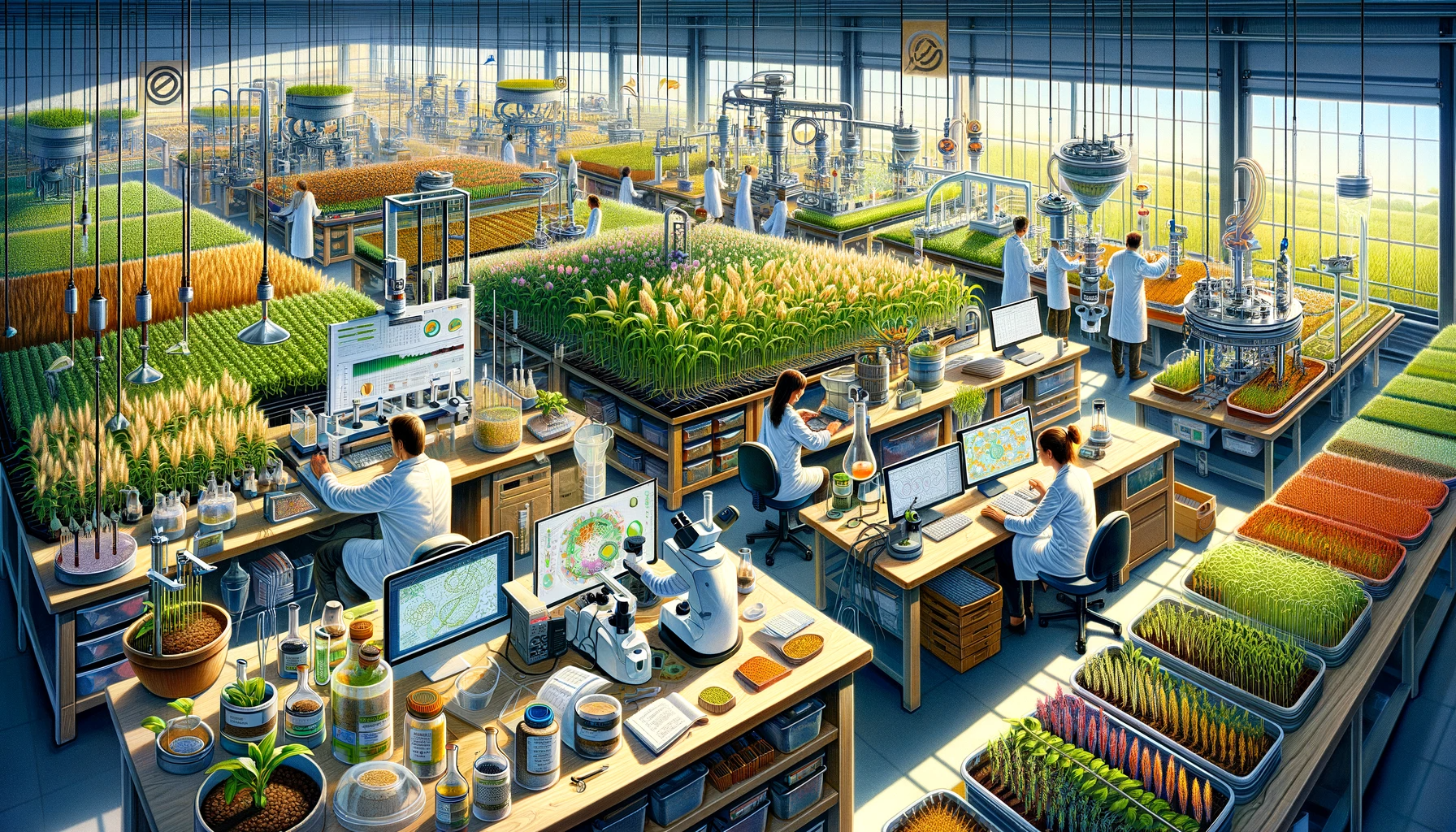
Biotechnology at AgTech is the application of scientific and engineering approaches to living organisms to improve agricultural processes. They range from genetic engineering to the development of sustainable agricultural practices.
Genetic engineering
- Development of resistant varieties: Developing plant varieties that are resistant to pests, diseases, and extreme weather conditions (drought, frost). This helps to reduce the need for pesticides and increase yields.
- Increasing nutritional value: Modifying the genetic code of plants to improve their nutritional quality, which could make a massive difference in the fight against world hunger.
Microbiological technologies
- Soil health: The use of microorganisms to improve soil quality, increase soil fertility and improve water balance.
- Biological pest control: Developing biological pesticides that are safer for the environment and humans than traditional chemicals.
Biodiversity and resource conservation
- Biodiversity Conservation: Developing agricultural practices that promote the conservation of native plant and animal species.
- Sustainable use of resources: Developing practices that reduce the environmental impact of agriculture, such as reducing water use and minimizing carbon emissions.
Digitalization and data in biotechnology
- Data collection and analysis: Using advanced technologies to collect data on biotechnology outcomes to improve biotechnology methods and approaches.
These technologies and tools are already having a significant impact on AgTech, opening up new horizons of efficiency and sustainability. Each has its advantages and disadvantages, but overall, their integration promises significant changes in agriculture.
Key players and products in AgTech
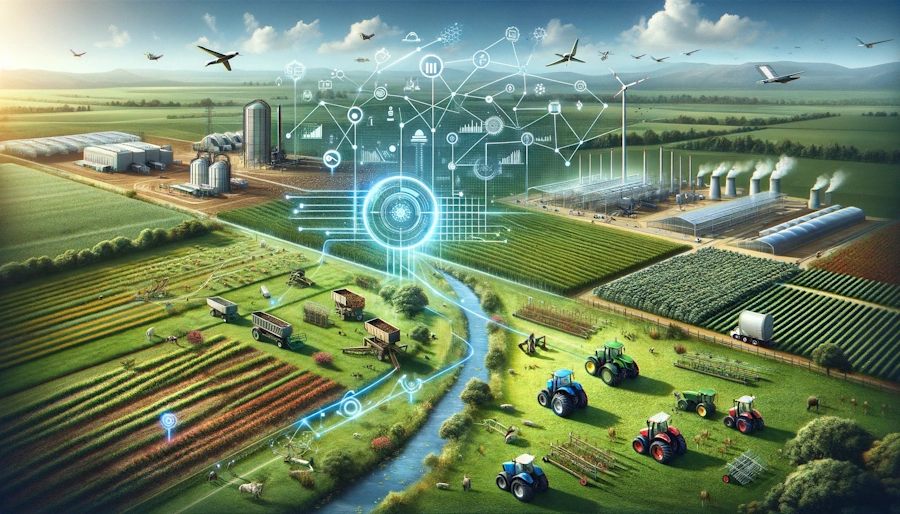
John Deere
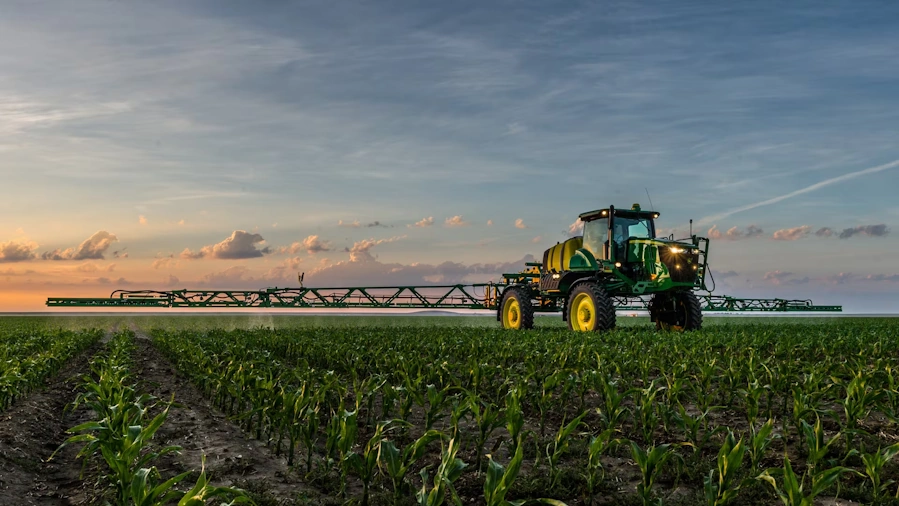
John Deere has long been known for its innovations in agricultural machinery.
Products: State-of-the-art tractors and combines with automatic control and sensors for data collection, as well as integration with precision farming systems.
Monsanto (Now part of Bayer)
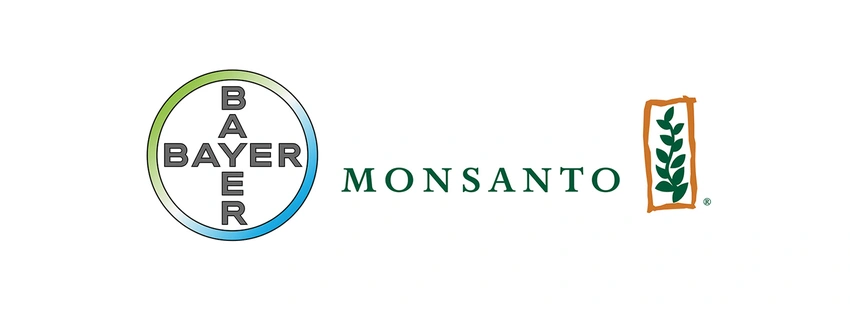
One of the leaders in biotechnology and seed production.
Products: Genetically modified seeds designed to increase yields and resistance to adverse conditions.
DJI

DJI is a major player in the drone market, including agrotech.
Products: Drones for field analysis, fertilizer distribution and crop protection.
Trimble
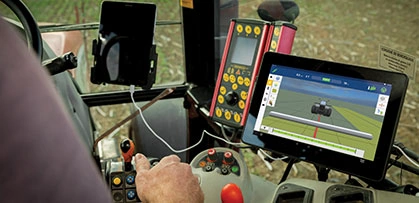
Trimble provides solutions for precision agriculture, increasing efficiency and reducing environmental footprint.
Products: GPS navigation systems, sensors for agronomic management, and data analysis software.
Blue River Technology

The company specializes in creating intelligent crop care machines.
Products: Systems that can automatically detect and control weeds, minimizing the need to use herbicides.
The Climate Corporation (Bayer)
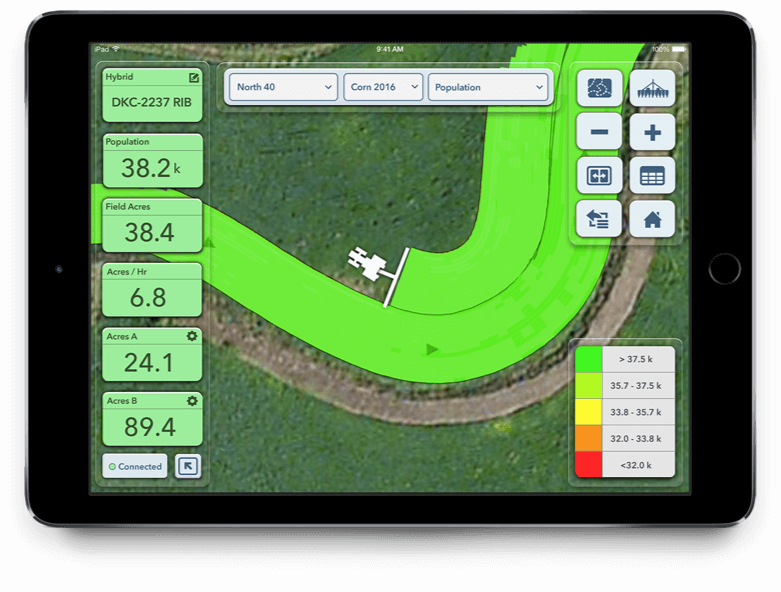
Development of digital agricultural tools to help farmers make decisions.
Products: Climate FieldView, a platform for data collection, analysis and visualization of crop information.
AeroFarms
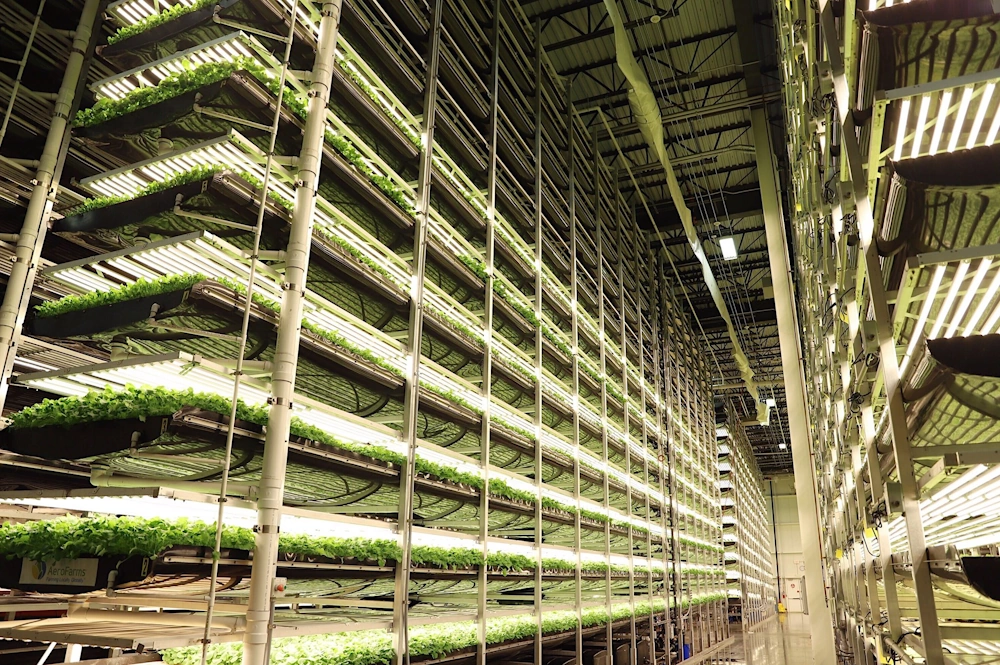
A leading player in vertical farming and hydroponics.
Products: Systems for growing crops indoors using minimal water and no soil.
Features of Development in the AgTech Domain:

Integration with agricultural machinery
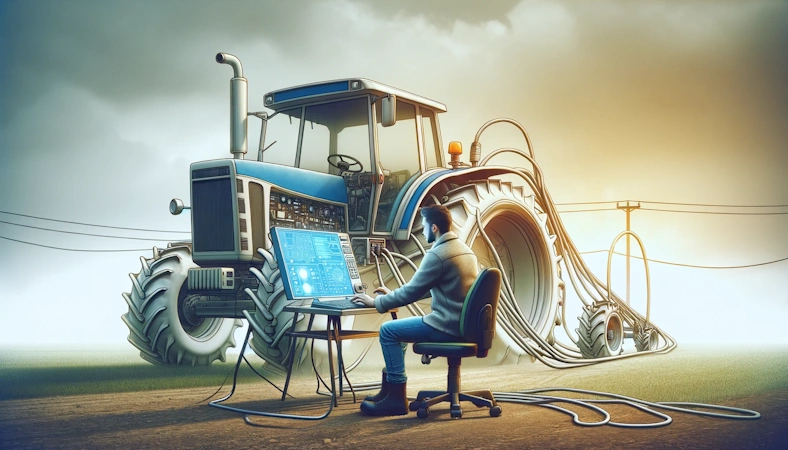
AgTech software development often requires integration with a variety of agricultural equipment such as tractors, combines, and drones. This involves a deep understanding of the communication protocols and interfaces used in this equipment. This can include things like CAN buses to communicate with tractor on-board computers, as well as data transfer protocols such as ISOBUS.
Big data and analytics

AgTech processes huge amounts of data collected by sensors and devices. Developers need to build systems that can efficiently process, analyze and visualize this data, such as Hadoop and Spark.
Mobile development
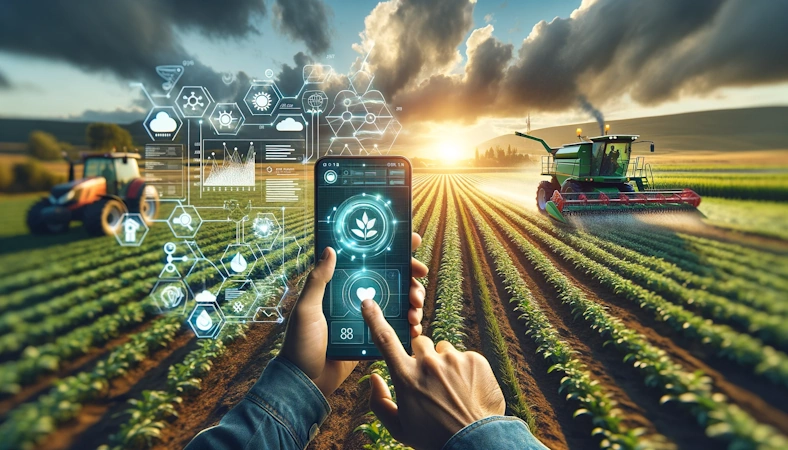
Farmers and agronomists often work in the field, so mobile apps are a key component in AgTech. This creates a need to develop cross-platform, intuitive and robust mobile apps. Create cross-platform mobile apps using React Native or Flutter or natively for each platform. An important aspect is to ensure that applications work reliably in low internet connection conditions and on devices with limited resources.
Consideration of the specifics of agriculture
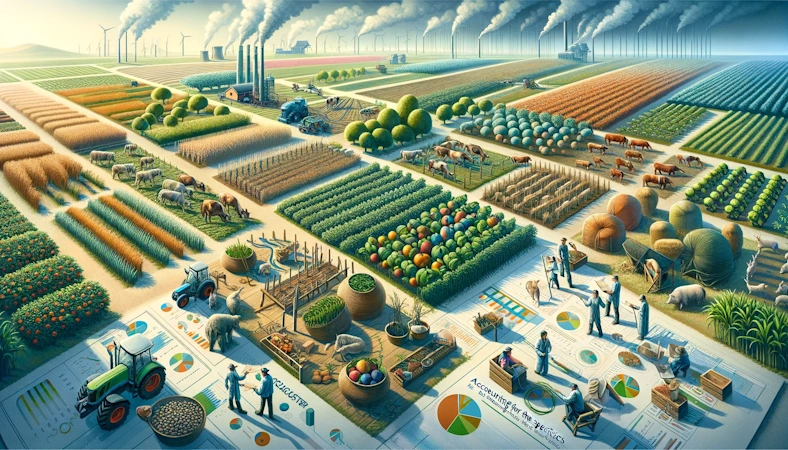
AgTech applications should be tailored to the specific needs and conditions of agriculture, including seasonality, different agro-climatic zones and the characteristics of the crops grown.
Internet of Things and sensor integration
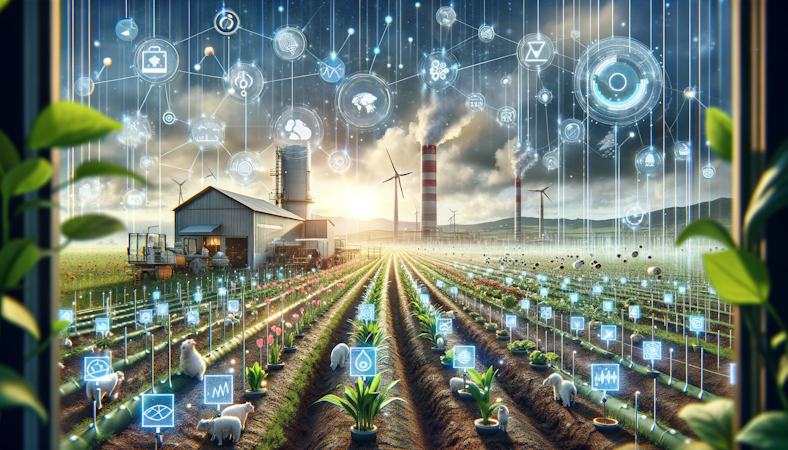
Development at AgTech includes integration with multiple IoT devices and sensors, which requires knowledge of IoT protocols and how to transfer data in a communication-constrained environment.
Regulation

United States of America
- National Bioengineered Food Disclosure Standard (NBFD Standard)
- USDA and FDA Oversight of Cell Culture Meat
- FDA and USDA-FSIS Cell Culture Food Agreement: Regulates food created from animal cell culture technology.
EU
- Strict GMO regulations: The EU has strict rules on the approval of genetically modified crops, with only one GM crop allowed.
- Gene editing technologies: The EU Court of Justice has ruled that gene-edited crops must be regulated under the existing GMO system.
- The European Commission is developing a regulatory framework for NGT.
Sustainability and environmental friendliness
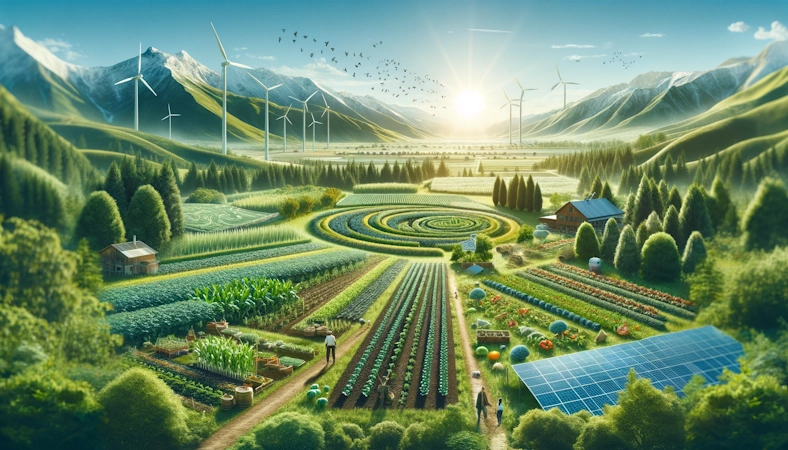
In view of the trend towards sustainable development, AgTech solutions should contribute to environmentally friendly and resource-efficient agriculture. Therefore, it is necessary to develop software solutions that help to reduce the use of resources such as water and fertilizers, through the application of algorithms for resource optimization and environmental impact analysis.
Trends and the future in AgTech

Automation and robotization
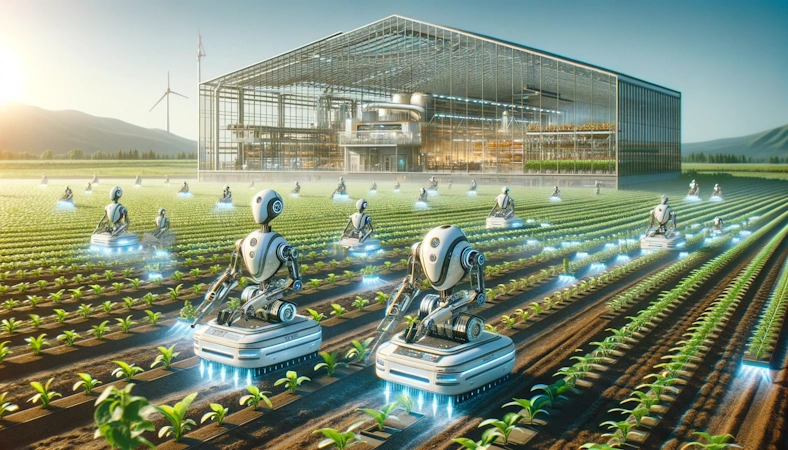
Increased use of autonomous robots and drones to perform routine tasks such as planting, cultivating and harvesting. Use of advanced algorithms for real-time navigation and decision-making, and integration with farm management systems.
Precision farming
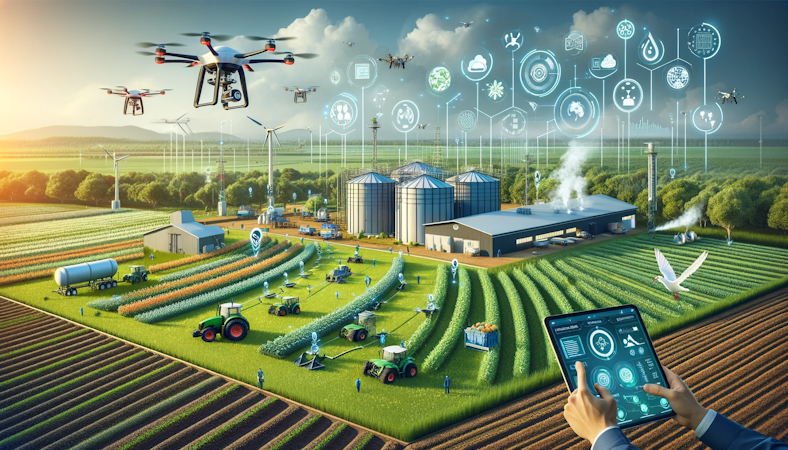
Developing precision farming systems that incorporate satellite positioning, IoT, and remote sensing to optimize agricultural operations. Utilizing weather, soi,l and plant data to create accurate crop care models.
Vertical farming and urban agriculture
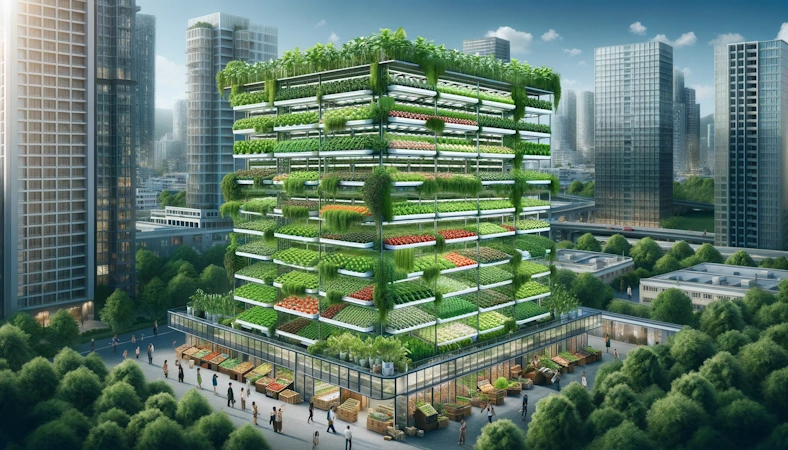
Development of technologies for efficient vertical farming in urban environments, including automated systems for climate, lighting and plant nutrition management. Integration with innovative city systems.
Biotechnology and genetic engineering
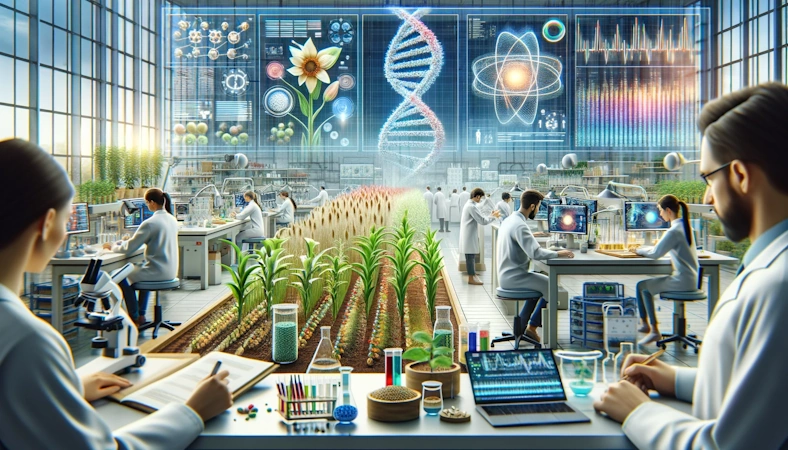
Continued development of GMOs to improve plant resistance to diseases and pests, increase yields and adapt to climate change. Ethics and safety of GMOs remain key issues.
Sustainable agriculture

Developing technologies to reduce waste and minimize environmental impact. This includes innovative use of resources such as water and fertilizers, and biological pest control techniques.
Digital platforms and blockchain

Implementing blockchain to provide transparency and traceability of food from field to table. Developing integrated digital platforms to manage data and resources throughout the supply chain.
Conclusion

Advances in AgTech are opening up new horizons for agriculture, one of the oldest and most important branches of human activity. Innovations in this sector are addressing key global challenges: increasing agricultural productivity, reducing environmental impact, combating climate change, and ensuring food security.
From automation and robotization to precision farming and genetic engineering, AgTech is a multi-level interweaving of different technologies. The key to success in this field is the ability to integrate the latest technological advances with the specifics and traditions of agriculture.
